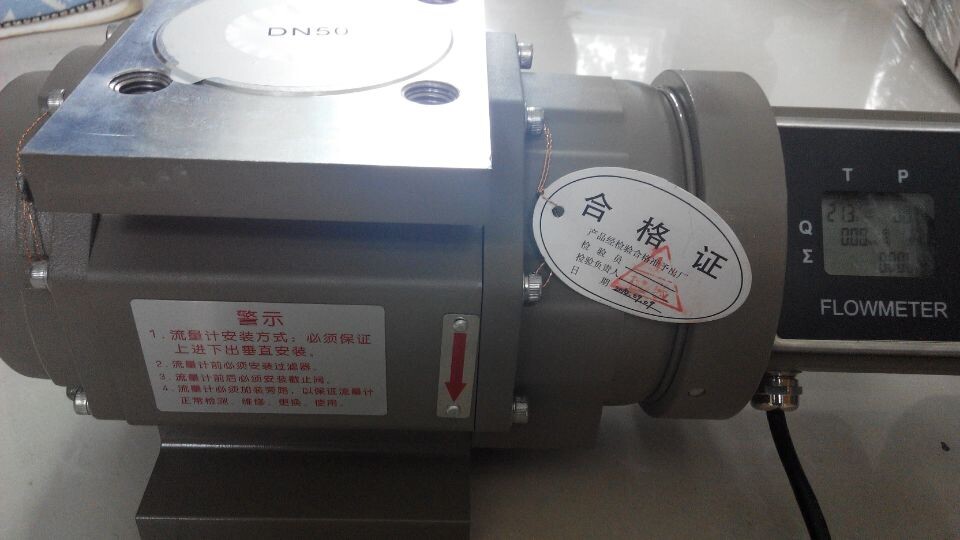How to Improve the Accuracy of Gas Roots Flowmeters Understanding the Principle of Roots Gas Flowmeters The Roots gas flowmeter is a high-precision volumetric flow measurement device known for its flexibility in installation and compact design. It is widely used in industrial applications where accurate gas flow measurement is essential. The core components of a Roots gas flowmeter include the measuring chamber, conjugate rotors, and a counting mechanism. These rotors are positioned inside the measuring chamber and rotate due to the pressure difference between the inlet and outlet of the gas. As the rotors turn, they alternately experience rotational forces, and each full rotation results in four times the effective volume of the measuring chamber being measured. This data is then transmitted via a magnetic coupling and a speed-reducing mechanism to the counter, which displays the total gas volume passed through the meter. Key Factors Affecting Measurement Accuracy From the working principle, it’s clear that the accuracy of the flowmeter largely depends on the precision of the measuring chamber and the rotors. Any deviation in their manufacturing can significantly impact the overall performance. The symmetry of the rotor and chamber, as well as the dynamic balance of the rotors, plays a critical role in maintaining consistent flow measurements, especially at low flow rates. The machining accuracy of the synchronous gears also influences both the accuracy and noise levels during operation. These gears ensure that the two rotors maintain a specific clearance regardless of their position. The size of this gap varies depending on the flowmeter's diameter—typically around 0.1 mm for small units and up to 0.4 mm for larger ones. A larger gap may lead to gas leakage, reducing accuracy, but allows larger particles to pass without issue. Conversely, a smaller gap minimizes leakage, improving accuracy, but may cause blockage from larger impurities, leading to operational problems. The choice of standard parts, particularly bearings, also affects performance. Our factory uses imported bearings to ensure long-term reliability. To reduce friction and improve efficiency, we often remove the dust cover and clean the grease inside the bearing. During operation, splash lubrication is used to keep the bearings cool and extend their lifespan. In addition to internal components, external factors during actual use can also affect measurement accuracy. Here are some common issues: 1) High-pressure vs. low-pressure gas flow: When the flowmeter is installed on a high-pressure line and the gas is regulated to a lower pressure before use, discrepancies can occur. If the low-pressure pipeline has a low flow rate, the calculated value may not match the actual flow, leading to undercounting or no reading at all. 2) Poor piping design: An example is when two parallel pipes exist. If the main pipe is closed and the secondary pipe is open, the flowmeter might measure correctly. However, if the main pipe is opened, the pressure drop could cause reverse flow, leading to double counting. Installing a check valve before the flowmeter can prevent this. 3) Proper installation is crucial: Ensure the flange holes align and the flowmeter is free from external forces that could deform the body. Always open the front valve first, then gradually open the rear valve to avoid sudden pressure surges that might damage the rotor. By addressing these factors, you can significantly enhance the accuracy and longevity of your Roots gas flowmeter. Regular maintenance and proper installation practices are key to achieving reliable and consistent performance.
The first process of Investment Casting production is the manufacture of investment mold, investment mold is used to form the cavity in the refractory shell model, so in order to obtain the casting with high dimensional accuracy and surface finish, the investment mold itself should have high dimensional accuracy and surface finish. In addition, the performance of the melt itself should also make the subsequent shell making process as simple as possible. In order to obtain the above high quality requirements of the investment die, in addition to good pressure (pressing the investment die), but also must choose the appropriate mold material (referred to as the mold) and reasonable mold making process.
The advantage of the investment casting method is that it can cast complex castings of various alloys, especially high temperature alloy castings. For example, the blade of jet engine, its streamlined outer profile and cooling inner cavity, with machining process almost impossible to form. Investment casting process can not only achieve mass production, ensure the consistency of castings, but also avoid the stress concentration of residual blade lines after machining.
The biggest advantage of investment casting is that because investment casting has a very high dimensional accuracy and surface finish, so it can reduce the machining work, just leave a little machining allowance in the parts requiring higher parts, and even some castings only leave grinding and polishing allowance, without mechanical processing can be used. It can be seen that the investment casting method can greatly save machine tools, processing time and metal raw materials.

silica soil casting parts, Precise dimension
Tianhui Machine Co.,Ltd , https://www.thcastings.com